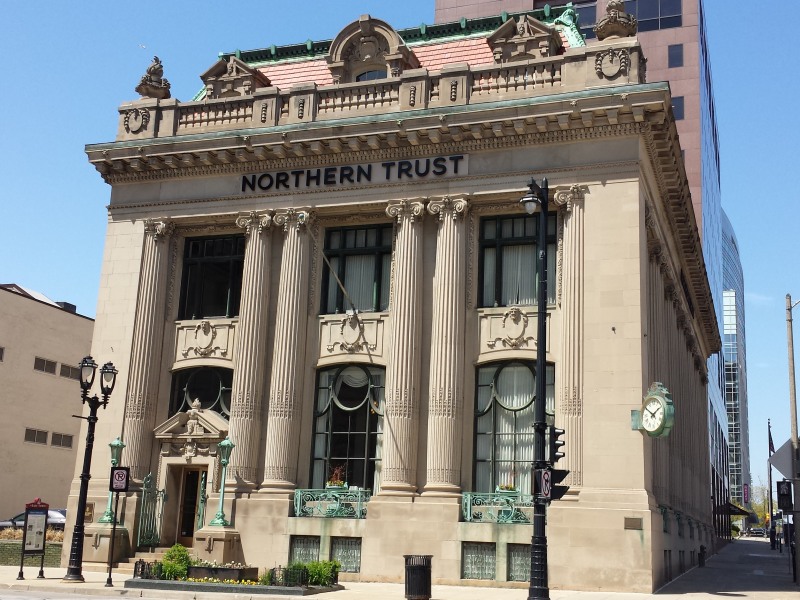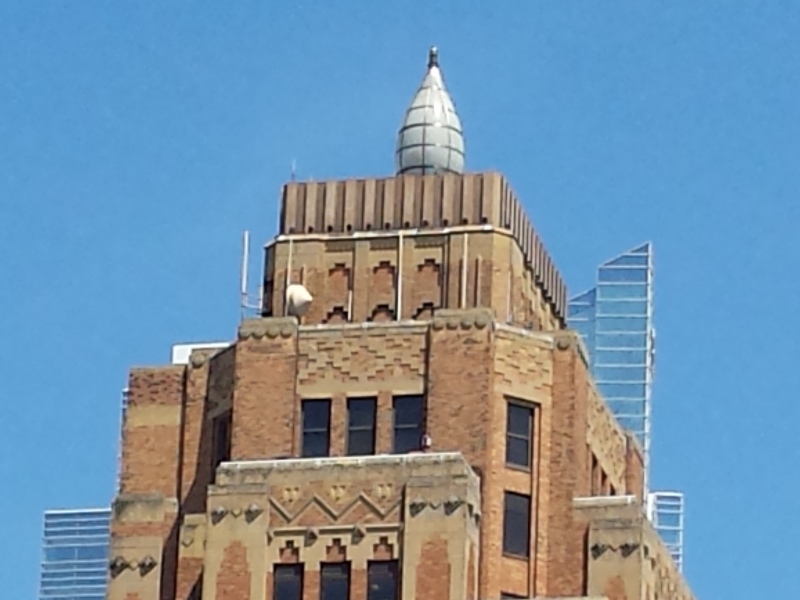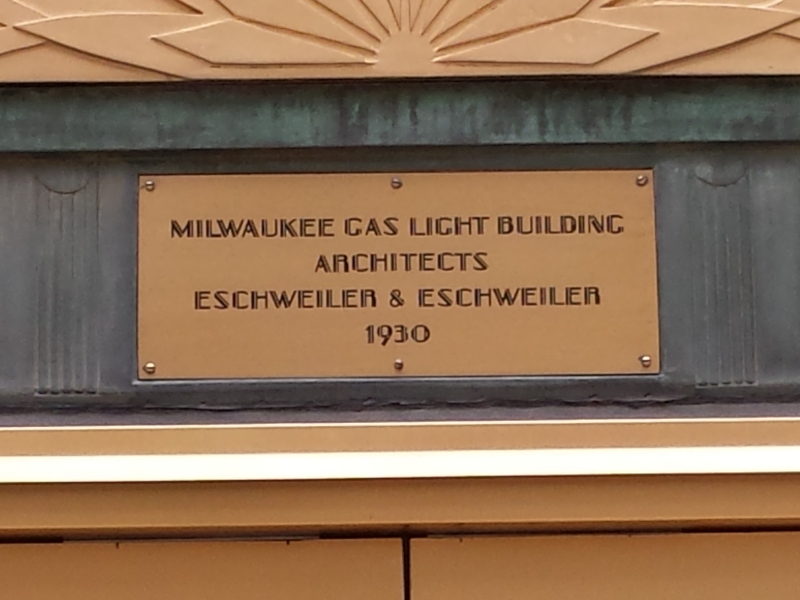 Northern Trust Building
Northern Trust Building
526 E. Wisconsin Ave.
Continue walking south on Jackson, crossing both Wells Street and Mason Street. Once you cross Mason, begin looking up and to your left to see the top of the Milwaukee Gas Light Building.
The 20-story Art Deco Milwaukee Gas Light Building (located at 626 Wisconsin Avenue) was built by Eschweiler & Eschweiler in 1930. It has a stepped-back form with brick and terracotta designs. A unique aspect of the building is the flame structure at the top, which is visible as you walk down Jackson. Believe it or not, the flame predicts the weather! If the flame is red, warmer weather is ahead. Gold signals colder weather, while blue indicates no change. If it's flickering, expect rain or snow!
Continue walking south on Jackson to Wisconsin Avenue. On the northwest corner sits the Northern Trust Building. For better viewing, you may want to cross Wisconsin Avenue.
The Northern Trust Building was built in 1906 by architects Ferry and Clas. Originally built for the Northwestern National Life Insurance Company, insurers of property owners and lake shippers against loss, the building is highly decorated and one of Milwaukee's finest Beaux Arts style structures. The Beaux-Arts style was popular in the United States during the late 19th and early 20th centuries, and blends Greek, Roman and Renaissance styles. Although a relatively small building, it is ornamented with two-story fluted columns, a highly decorated base and ornate trim around the windows. The urns surrounded by carved flames on each corner of the building symbolize an ancient warning signal for mariners.
If you haven't already done so, cross to the south side of Wisconsin Avenue.
The Northern Trust Building was built in 1906 by architects Ferry and Clas. Originally built for the Northwestern National Life Insurance Company, insurers of property owners and lake shippers against loss, the building is highly decorated and one of Milwaukee's finest Beaux Arts style structures. The Beaux-Arts style was popular in the United States during the late 19th and early 20th centuries, and blends Greek, Roman and Renaissance styles. Although a relatively small building, it is ornamented with two-story fluted columns, a highly decorated base and ornate trim around the windows. The urns surrounded by carved flames on each corner of the building symbolize an ancient warning signal for mariners.
If you haven't already done so, cross to the south side of Wisconsin Avenue.

